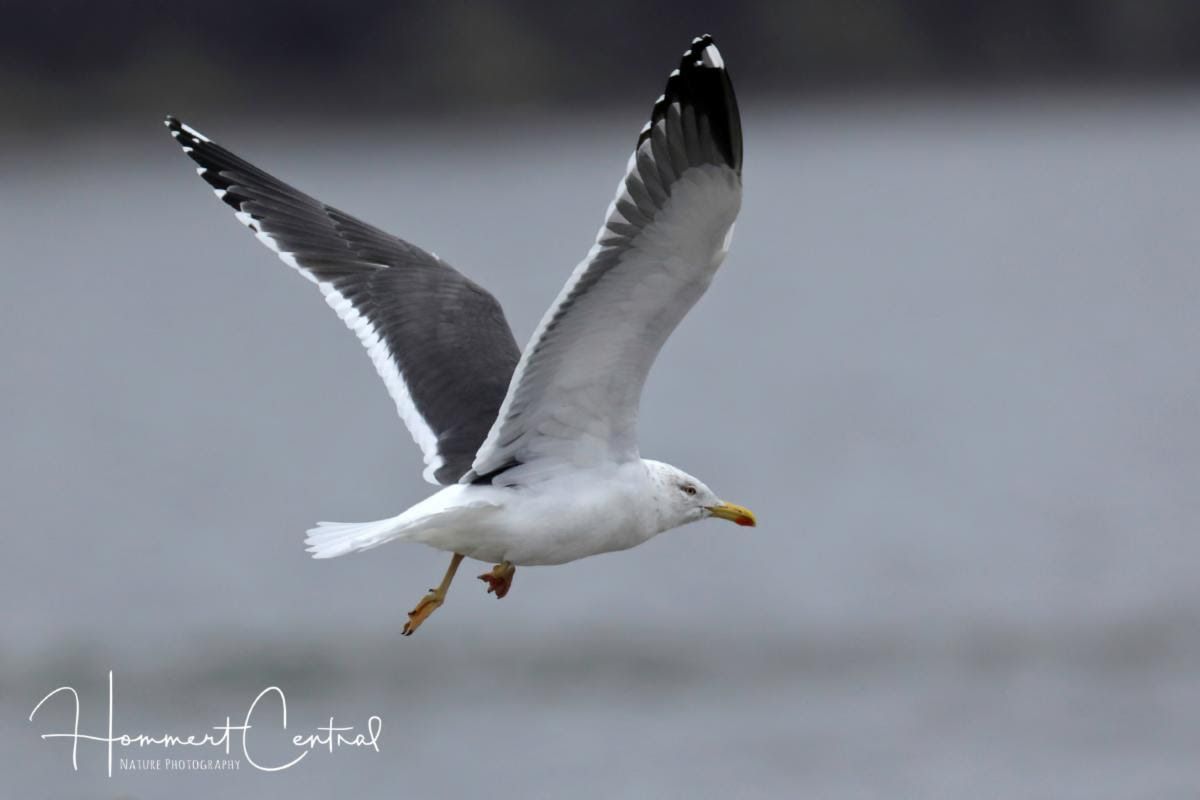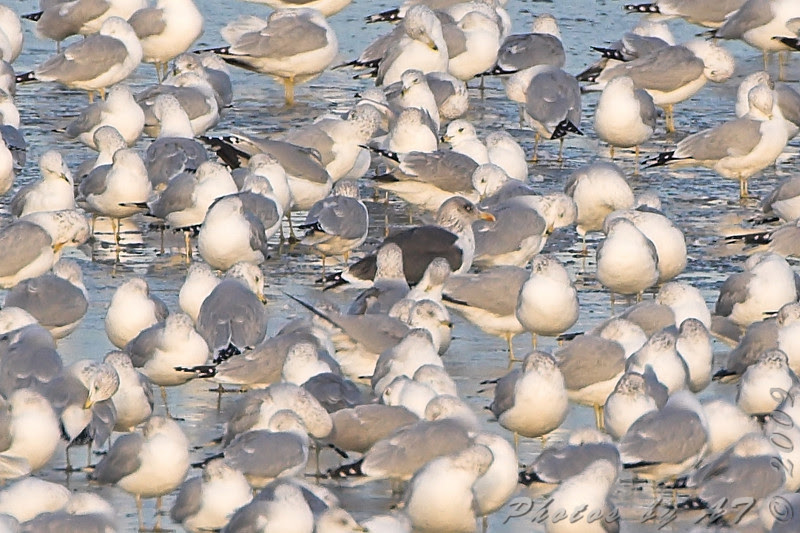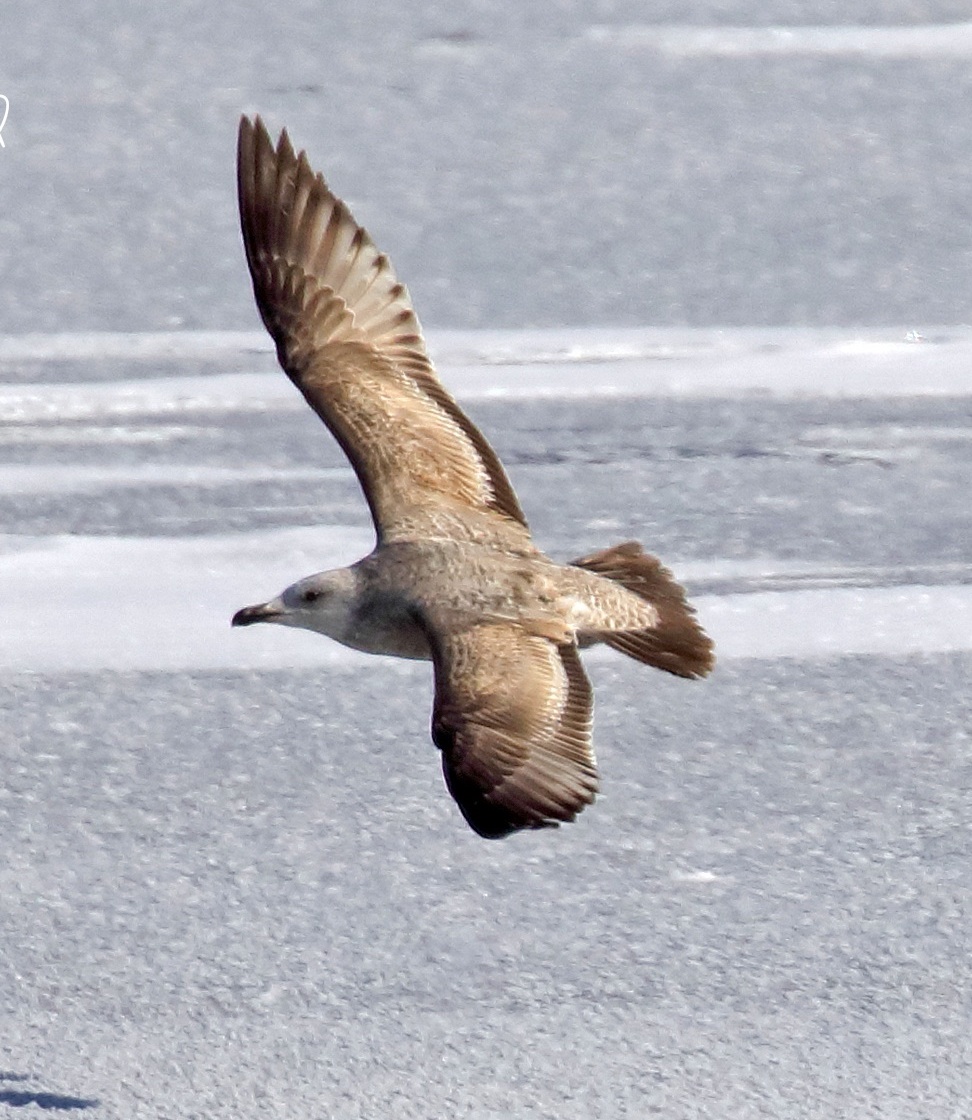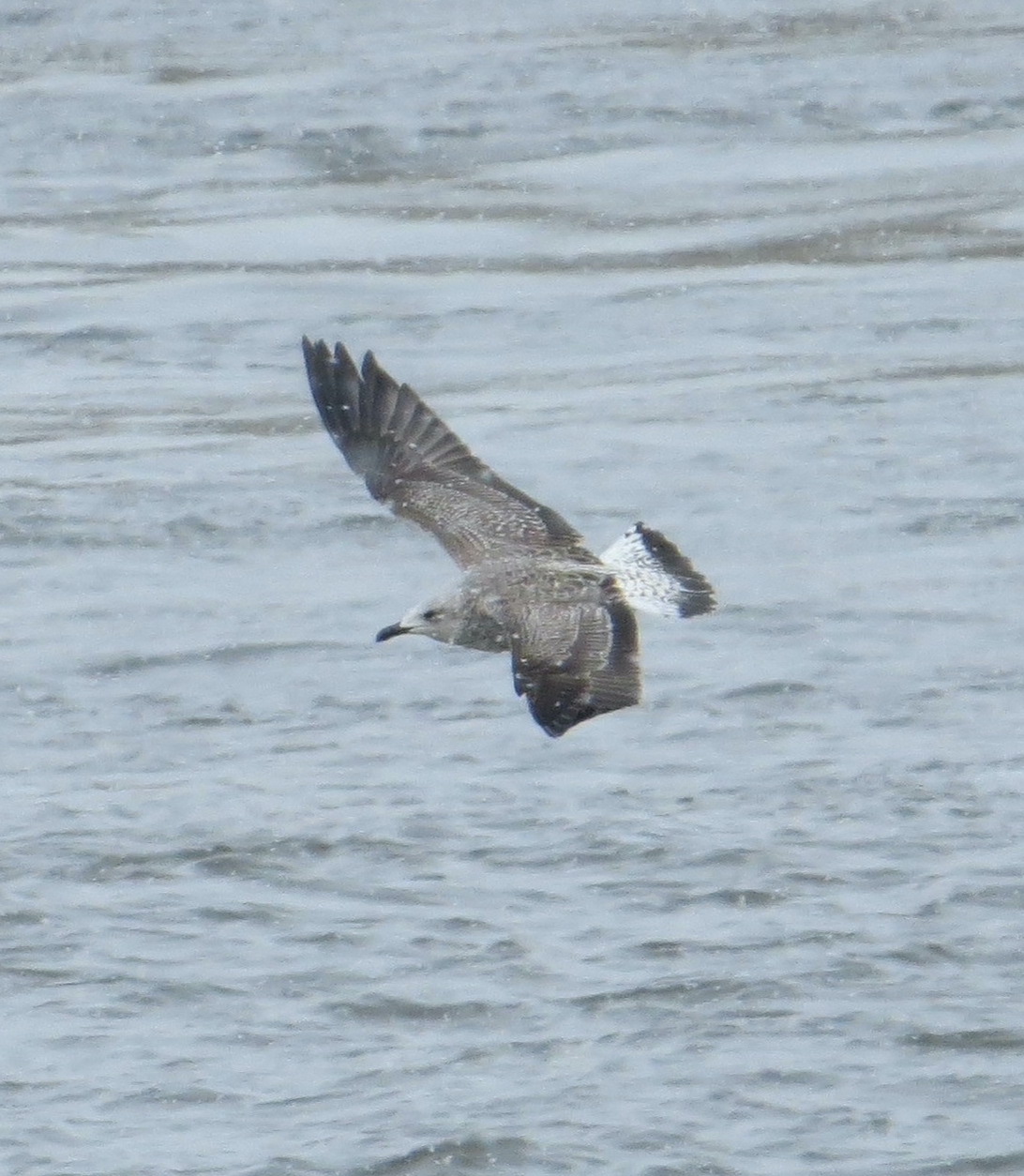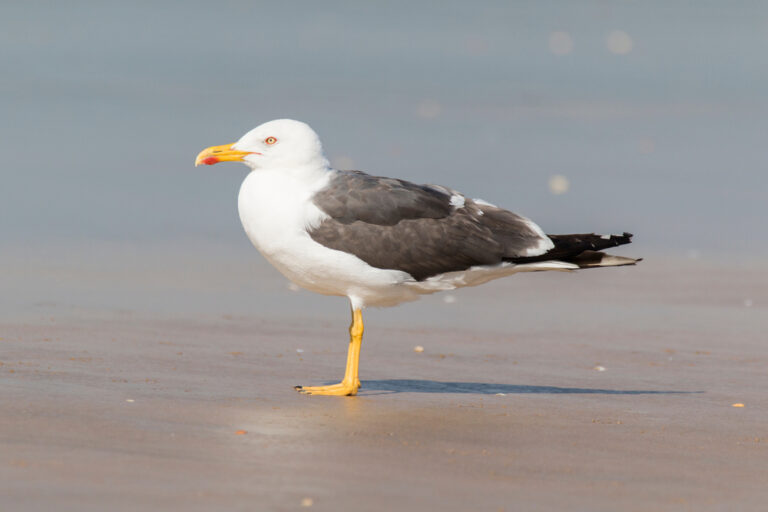
Lesser Black-backed Gull, Larus fuscus
Bill Rowe
Out of the 19 species of gulls ever seen in the St. Louis area, we’ve covered the four that have always been considered the “regulars”: Ring-billed, Herring, Bonaparte’s, and Franklin’s. Now we’ll look at the Lesser Black-backed Gull, which you could call either the “least rare” of the others or the “fifth regular” one—which is a bit of a surprise, since this Eurasian bird wasn’t even sighted in North America until 1934, or in Missouri until 1980, and was considered a definite rarity here until the 2000’s. It may be that westward expansion of its breeding range has provided a source of more wanderers into the American interior; in fact, it may be that there is a nesting population in Canada, as yet undiscovered. At any rate, the species is now commonplace on the Atlantic coast and reasonably regular, though still fun to find, in the Midwest. Like all the large gulls, it loves fish and is most likely to show up on larger lakes and rivers, wherever Ring-bills and Herrings are congregating. (Another useful food source, and congregation spot, is a garbage dump.) In the Old World, the Lesser Black-back occurs in various forms that differ from each other in small ways and are called subspecies; some of these may actually be separate species, but the situation is truly complex. Our birds seem to come from the lightest-backed population, called graellsii, nesting from Great Britain west to Greenland.
IDENTIFICATION: The Lesser Black-back is in between a Ring-bill and a Herring in size, with long wingtips that give it a stretched-out look. Like Herring, it takes four years to mature, from a mottled brownish first-year stage to a crisply patterned full adult. Let’s take adults first: these usually stand out with their dark gray mantle (much darker than any Herring), yellow legs (pink in Herring), and a yellow bill with a red spot (same as Herring). Note: if you see an adult that is dark gray or blackish with pink legs, it is a rarer species! Second- and third-year birds are “messier” but normally have enough dark gray on the back to identify them. The real issue comes with first-year birds, which are much like same-age Herrings. See bottom photos below for some clues.
ST. LOUIS STATUS: Nowadays, possible to find wherever gulls gather, mostly November through March but sometimes earlier in fall and later in spring—and there are a few summer records as well. Singles are most frequent, but there can be up to several together at favorable times and locations.
Learn more and listen to the calls of Lesser Black-backed Gulls here.
